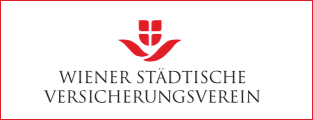Welcome at the Interface Culture program website.
Acting as creative artists and researchers, students learn how to advance the state of the art of current interface technologies and applications. Through interdisciplinary research and team work, they also develop new aspects of interface design including its cultural and social applications. The themes elaborated under the Master's programme in relation to interactive technologies include Interactive Environments, Interactive Art, Ubiquitous Computing, game design, VR and MR environments, Sound Art, Media Art, Web-Art, Software Art, HCI research and interaction design.

The Interface Culture program at the Linz University of Arts Department of Media was founded in 2004 by Christa Sommerer and Laurent Mignonneau. The program teaches students of human-machine interaction to develop innovative interfaces that harness new interface technologies at the confluence of art, research, application and design, and to investigate the cultural and social possibilities of implementing them.
The term "interface" is omnipresent nowadays. Basically, it describes an intersection or linkage between different computer systems that makes use of hardware components and software programs to enable the exchange and transmission of digital information via communications protocols.
However, an interface also describes the hook-up between human and machine, whereby the human qua user undertakes interaction as a means of operating and influencing the software and hardware components of a digital system. An interface thus enables human beings to communicate with digital technologies as well as to generate, receive and exchange data. Examples of interfaces in very widespread use are the mouse-keyboard interface and graphical user interfaces (i.e. desktop metaphors). In recent years, though, we have witnessed rapid developments in the direction of more intuitive and more seamless interface designs; the fields of research that have emerged include ubiquitous computing, intelligent environments, tangible user interfaces, auditory interfaces, VR-based and MR-based interaction, multi-modal interaction (camera-based interaction, voice-driven interaction, gesture-based interaction), robotic interfaces, natural interfaces and artistic and metaphoric interfaces.
Artists in the field of interactive art have been conducting research on human-machine interaction for a number of years now. By means of artistic, intuitive, conceptual, social and critical forms of interaction design, they have shown how digital processes can become essential elements of the artistic process.
Ars Electronica and in particular the Prix Ars Electronica's Interactive Art category launched in 1991 has had a powerful impact on this dialog and played an active role in promoting ongoing development in this field of research.
The Interface Cultures program is based upon this know-how. It is an artistic-scientific course of study to give budding media artists and media theoreticians solid training in creative and innovative interface design. Artistic design in these areas includes interactive art, netart, software art, robotic art, soundart, noiseart, games & storytelling and mobile art, as well as new hybrid fields like genetic art, bioart, spaceart and nanoart.
It is precisely this combination of technical know-how, interdisciplinary research and a creative artistic-scientific approach to a task that makes it possible to develop new, creative interfaces that engender progressive and innovative artistic-creative applications for media art, media design, media research and communication.
Ö1 Talentestipendium für bildende Künste 2025
Das Ö1 Talentestipendium für bildende Kunst in der Höhe von 10.000 Euro, das vom Wiener Städtischen Versicherungsverein zur Verfügung gestellt wird, wird von Ö1 heuer bereits zum achtzehnten Mal ausgeschrieben. Dieser Ö1 Preis dient der Nachwuchsförderung von Studierenden, die an einer der folgenden fünf Universitäten studieren: Akademie der bilden- den Künste Wien, Universität für angewandte Kunst Wien, Kunstuniversität Linz, Universität Mozarteum Salzburg, Kunstuniversität Graz.
Bewerben können sich alle österreichischen (beziehungsweise in Österreich) Studierenden die folgende Kriterien erfüllen:
- Die Bewerber*innen müssen als ordentliche Hörer*innen an einer der angeführten Kunstuniversitäten eingeschrieben sein.
- Die Bewerber*innen müssen sich bereits im zweiten Studienabschnitt (alte Studienordnung) bzw. in der Endphase des Bachelor- oder Master- Studiums befinden.
- Studierende, die Bezieher*innen eines oder mehrerer Stipendien sind, welche zum Zeitpunkt der Einreichung die Gesamthöhe von insgesamt 3.000 Euro pro Jahr übersteigen, sind vom Ö1 Talentestipendium für bildende Kunst 2025 ausgeschlossen (ausgenommen davon sind die Studienbeihilfen der Studienbeihilfenbehörde).
- Studierende, die sich im Rahmen eines Studierenden-Mobilitätsprogrammes (ERASMUS, Joint Study etc.) in Österreich befinden, sind von der Teilnahme ausgeschlossen.
Die Shortlist-Kandidat:innen erhalten 535 Euro als Honorar für die Teilnahme und ihre Tätigkeiten im Zuge des Ausstellungsauf- und abbaus. Der/dieGewinner:in des Stipendiums ist davon ausgenommen.
Im Herbst 2025 wird in Wien der/die Gewinner:in des Ö1 Talentestipendiums für bildende Kunst 2025, sowie der/die Publikumspreisträger:in bekanntgegeben und das Stipendium vergeben.
Die Einreichfrist für das Ö1 Talentestipendium für bildende Kunst 2023 beginnt am 17. März 2025 und endet am 25. April 2025.
DIE EINREICHUNG ERFOLGT DIGITAL ÜBER:
https://calls.kunstuni-linz.at/calls/
Für Rückfragen steht zur Verfügung:
Kunstuniversität Linz
PR & Kommunikation
Verena Leitner, BA
e: verena.leitner@kunstuni-linz.at
t: +43 732 78 98 2276
Für eine regelkonforme Einreichung, beachten Sie bitte unbedingt die Teilnahmebedingungen

